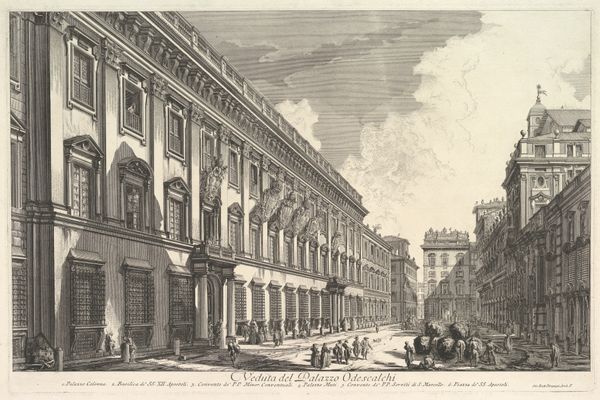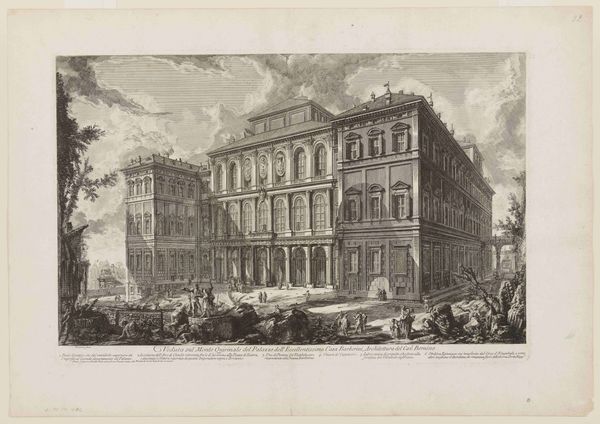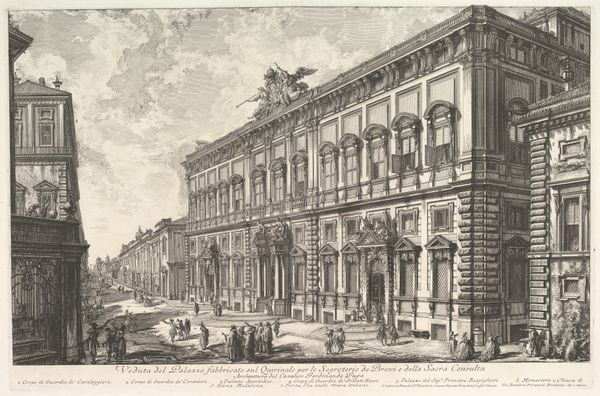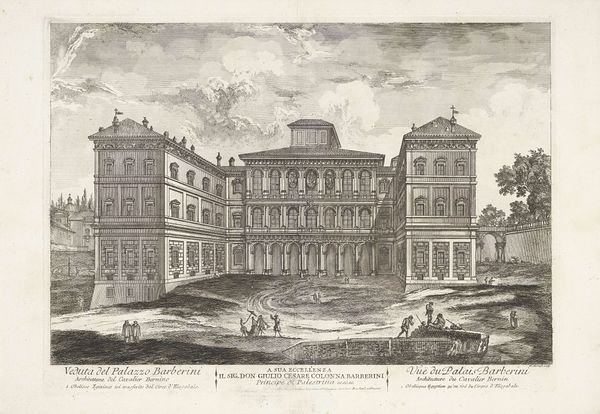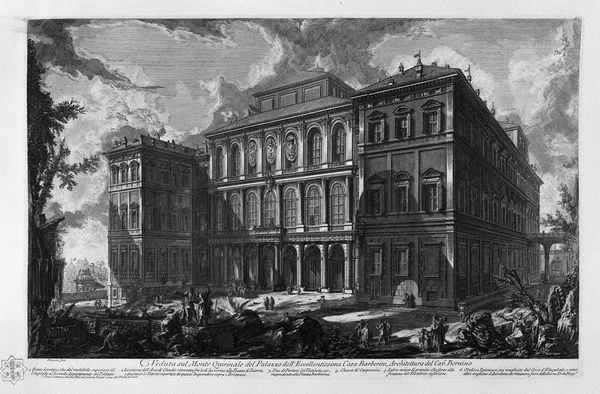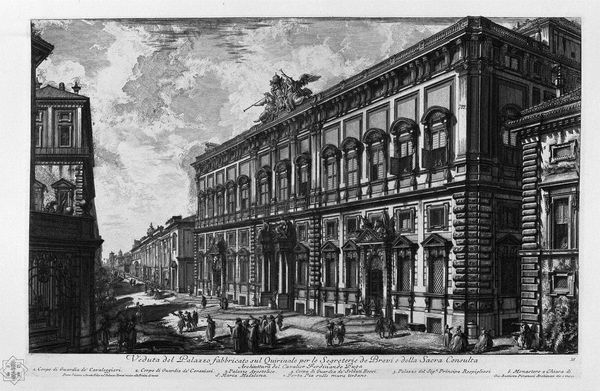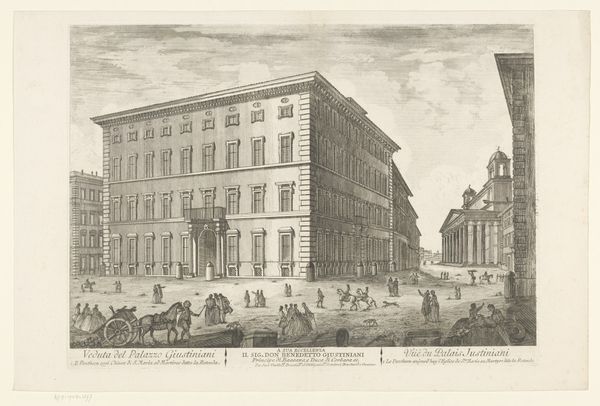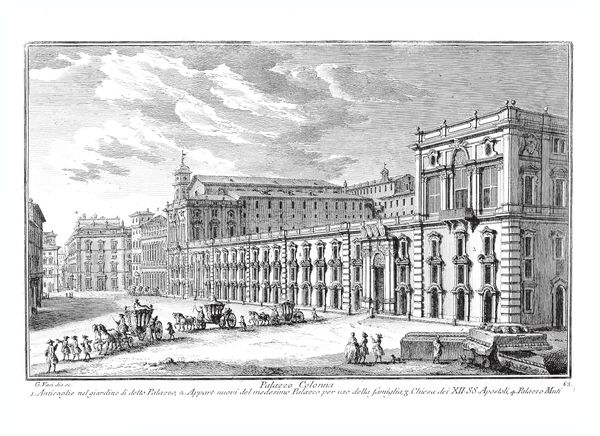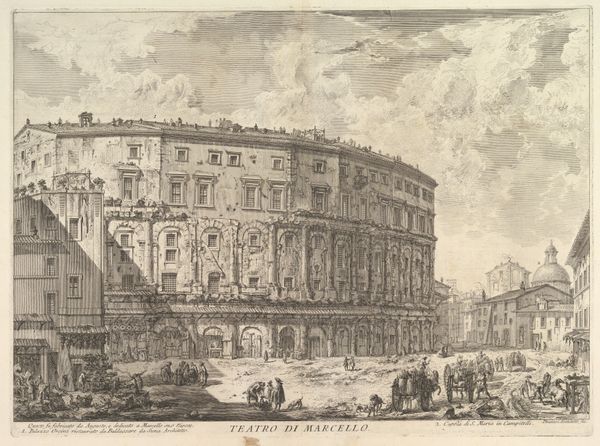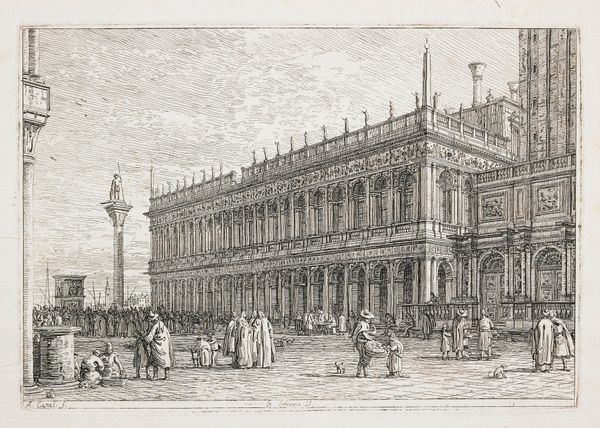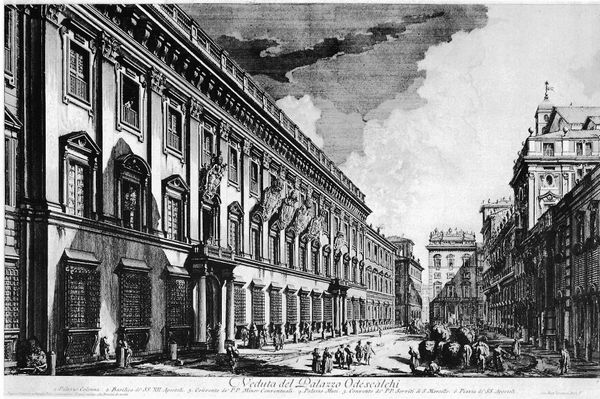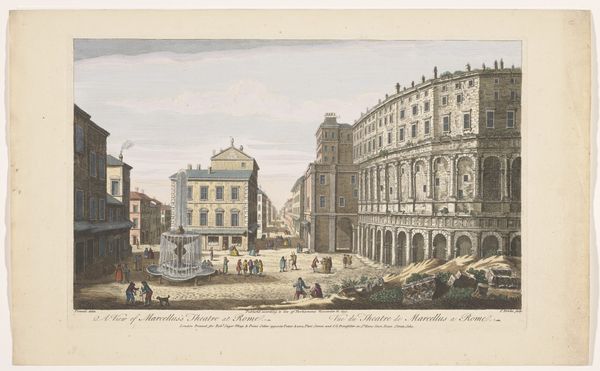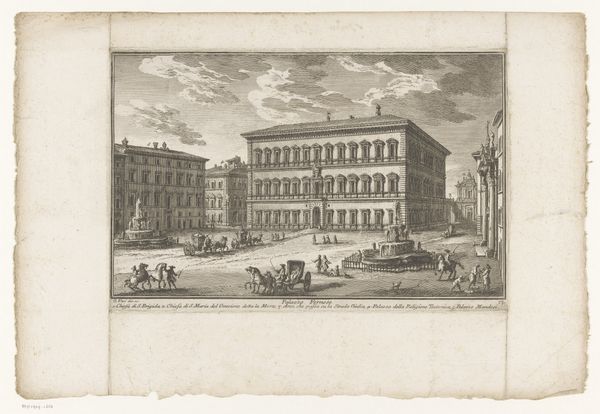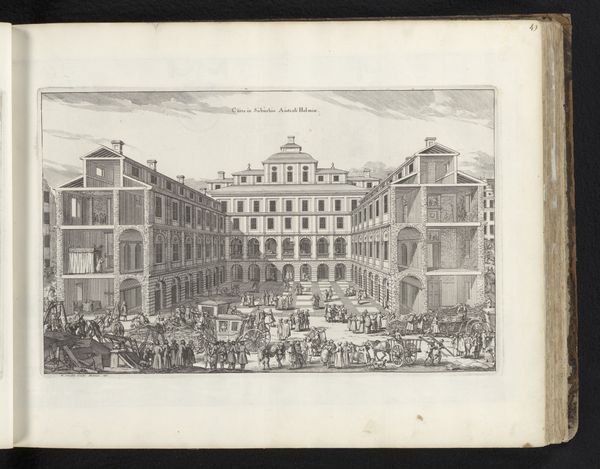
View of the palace of the illustrious Barberini family on the Quirinal Hill, designed by Cavaliere Bernini, from Vedute di Roma (Roman Views) 1745 - 1755
0:00
0:00
drawing, print, engraving, architecture
#
drawing
#
baroque
# print
#
cityscape
#
engraving
#
architecture
Dimensions: Sheet: 19 1/8 x 27 5/16 in. (48.5 x 69.4 cm) Plate: 15 3/4 x 23 15/16 in. (40 x 60.8 cm)
Copyright: Public Domain
This print by Giovanni Battista Piranesi captures the Palazzo Barberini, a Roman testament to Baroque grandeur. Notice the prominent use of the arch, a motif deeply rooted in Roman architectural vocabulary. The arch, far from being merely structural, carries a symbolic weight that spans millennia. We see its echoes in triumphal arches erected to honor emperors, in the rounded vaults of ancient bathhouses, and in the sacred spaces of early Christian basilicas. It's a visual echo that conveys power and continuity, a deliberate invocation of Rome's imperial past, subtly transforming the Barberini family into modern-day emperors. Consider how the arch reappears in Renaissance paintings framing divine figures, or in the sweeping curves of Baroque cathedrals reaching towards the heavens. The arch thus becomes a potent carrier of collective memory, a form that subconsciously resonates with notions of authority, divinity, and the enduring legacy of civilization. It’s this cyclical return of forms that reveals the complex interplay between past and present, echoing through the corridors of time, influencing our perception and shaping our understanding of power and permanence.
Comments
No comments
Be the first to comment and join the conversation on the ultimate creative platform.
